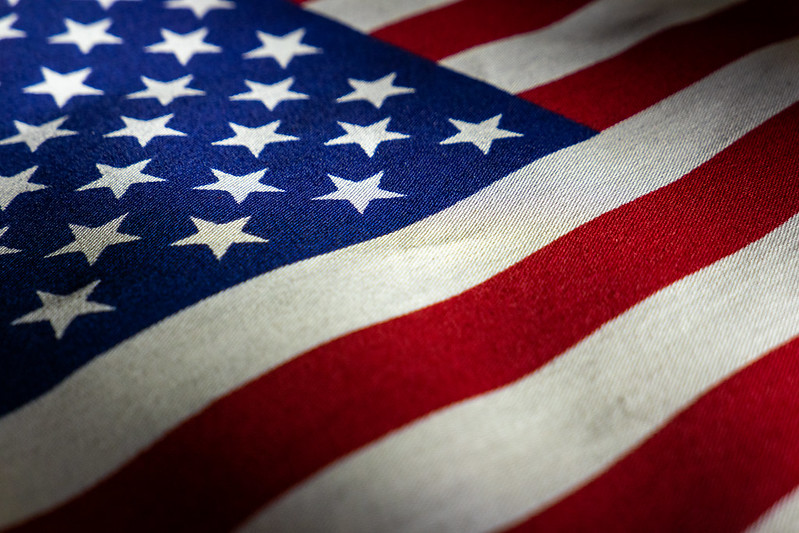It’s Flag Day, so here’s the story of a flag that’s so big, it’s officially super.
That’s the flag’s name, in fact: Superflag.
And the man behind the flag is Thomas Demski, who the newspapers say was once best known for riding a motorcycle with his pet macaw Peppy on his shoulder.
Back in 1992, he shelled out $45,000 for a flag that measured 505 feet long and 255 feet high.
Each stripe is 20 feet wide, and the stars stretch 16 feet from point to point.
They don’t make many flagpoles that size, so usually it’s exhibited with several hundred people holding it up from the ground.
Though, on May 1st, 1996, Superflag did fly over a suitably large installation: Hoover Dam.
It was supposed to be in place as the team carrying the Olympic torch passed by the dam, though the flag had to be taken down beforehand.
Superflag weighs 3,000 pounds, so it had to be rigged up with steel cables.
Once the wind got hold of it, the cables started snapping.
Demski also had to spend another $5,000 repairing three giant rips in the fabric.
Still, he set another record, for largest flag ever flown.
And while both of Superflag’s world records have been surpassed, it’s still believed to be the biggest U.S. flag out there.
And if you’ve figured out a way to fly it without the flag ripping or steel cables snapping, there’s a guy who might want to hear from you.
There have been stories in recent years about blind people who have figured out how to use clicking noises as a kind of echolocation to navigate around, which is remarkable.
A study out of Durham University found that people can learn and effectively use click-based echolocation in the real world after practicing for 10 weeks.
That sounds like time well spent, doesn’t it?
Was the World’s Largest U.S. Flag Displayed at Hoover Dam? (Snopes)
Echolocation: People trained to hear like bats in a study that could help those with vision loss (Science Focus)

